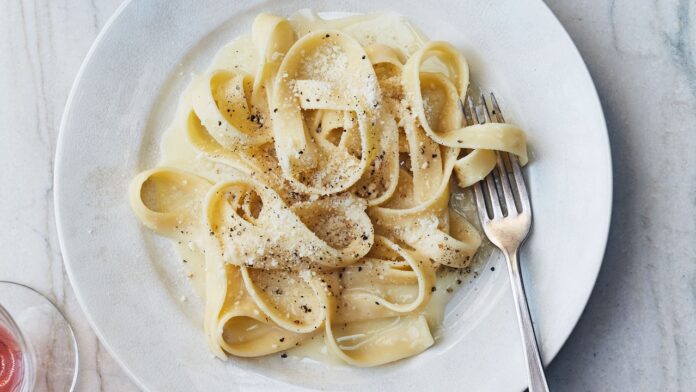In the early 1900s, Italian restaurateur Alfredo Di Lelio started serving plates of pasta enrobed with cheese and butter at his restaurant in Rome. Known today as fettuccine Alfredo, the dish gained more fame in the past century in the US than in its home country. But it also evolved in its new environs: American cooks added heavy cream or half-and-half to thicken and enrich the sauce. To each their own, but no authentic fettuccine Alfredo recipe should include cream (because it dulls the flavor of the cheese).
Like Roman staples cacio e pepe and pasta alla gricia, the gloss in Alfredo sauce comes from an emulsion of cheese with starchy pasta water (and, in this case, butter, which should be cold and cut into small pieces). It’s not a complicated technique, but it requires patience. The rich dairy must be introduced to the water slowly so that the elements can coalesce into that silky sauce. For extra guidance, check out this step-by-step video.
The short ingredient list—pasta, butter, and Parmesan—means this is the place to be choosy, particularly with the cheese. Parmigiano-Reggiano (look for its name stamped on the side) is the classic choice and will absolutely give you the best flavor, but there are less expensive substitutes. Whatever you buy, choose a whole wedge and grate it coarsely yourself; or, pulse it in a food processor or blender (about five 30-second pulses should do it) to produce small beads of cheese that will melt evenly.
To transform this simple pasta dish into chicken Alfredo, serve alongside a platter of tangy chicken piccata; or for shrimp Alfredo, make garlicky shrimp scampi.



